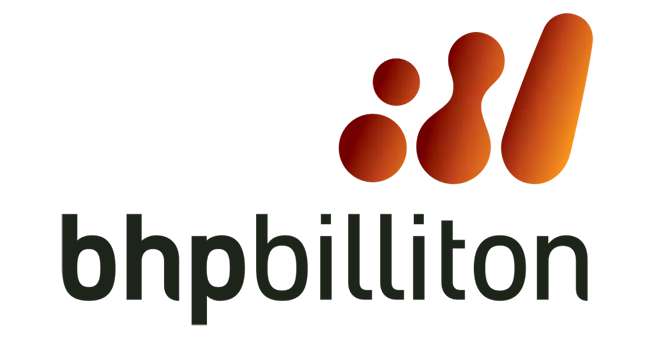Imagine if the World’s largest Mining company couldn’t dig its way out of the massive hole it is in? BHP could be Australia’s largest investment catastrophe, now at a SEVEN YEAR LOW
BHP in the hole: The old adage of when you are in a hole, stop digging couldn’t be more appropriate than right now for former market darling, BHP. The World’s largest miner is in real trouble and is taking with it, billions of dollars in superannuation money.
None of this is new news and certainly has not sprung out of the cupboard. In fact it has been more than three years in the making, and in doing so has once again highlighted the biggest weakness in so many investors strategy. Holding on blindly, taking the long-term view and overlooking all faults in favour of receiving a juicy dividend.
The Rise and then Fall of BHP…
BHP peaked out at $48.70 in May 2008. The onset of the Global Financial Crisis saw the stock hammered hard, dropping to $21.90 by November of that year – a 55% fall from grace. However, at that time, the cavalry came over the hill, in the form of China and its massive industrialisation. With commodity prices running hard, driven by our near neighbour, BHP enjoyed a very, very lucrative 3 year run, as the stock recovered, almost back to record highs.
However, April 2011 was when the party stopped, for the behemoth miner, flagging a great time for portfolio investors to exit the stock. Easy to say with hindsight, of course, but not many did and are now paying for that indecision.
Weaker Commodity Prices
Like most commodity prices, Iron Ore has been decimated by the slowdown in Chinese demand. To put this into context, China consumes close to 70% of the globally traded seaborne Iron Ore. While it has its own supply, domestically, this is typically low quality and production has already been scaled back significantly. China has also had negative growth in its steel use, something that is expected to continue into the new year.
And increased supply
Despite a weaker underlying price, capacity amongst the big three – BHP, RIO and Vale continues to increase, with BHP forecasting a 6% increase on its production from last year.
Gina Rinehart’s Roy Hill Project is also gearing up for production, adding a further 55m tonnes to global supply.
However, the real game changer is in South America, where Brazil’s producer, Vale, is bringing on stream its new Vale S11D plant, which adds another 90 million tonnes or so to Vale’s production capacity and with costs of just $11/tonne, exerts huge pressure on many of the less efficient producers.
But where is Demand?
As an economist, knowing that price is a factor of both Supply and Demand, it is hard to see where the strength of demand is going to come from. Afterall, in the post GFC environment, China’s demand propelled prices to new highs, but what now?
With Chinese demand no longer growing, as well as supply increasing, Iron Ore prices look set to remain at or around current levels and these, while profitable for the big guys like BHP, don’t have the same juicy margins that the sector enjoyed in recent years.
What’s more, this time, there appears to be no cavalry coming over the hill.
So if that is the sector, what about the stock itself?
Well, being objective, BHP is copping a hiding from all angles. As well as the sectoral structural decline, BHP has been battling its own demons too. The Dam spill at its Samarco iron ore mine in Brazil is bad news, full stop!
The costs of make good on this are likely to be considerable more than the billion dollars first intimated. Additionally the closure of the facility, which adds and estimated $190m plus to BHP’s annual profits, will nibble at the bottom line. BP’s costs following the Gulf of Mexico disaster saw almost $19bn in fines. While nobody is expecting this for BHP, there is enormous reputation damage for the company.
Then there is the Dividend Policy
BHP introduced a progressive dividend policy, which at least maintains but more likely steadily increases dividends per share, each half year, in US dollar terms.
With the company’s earnings under pressure from falling commodity prices, this progressive policy is under major threat and will most likely come under great scrutiny, at this week’s AGM.
Funding dividends, to maintain shareholder loyalty, is one thing, particularly in times of bumper profits. However, when such a dividend may need to be paid via debt, is extremely questionable – “Robbing Peter, to pay Paul” if you will.
So at these levels, is time to buy?
From this article, you now have an appreciation of just how badly BHP has performed and perhaps why. More importantly, you have an idea of what is on the radar for the stock, in the near term. Is it time to buy, sell or hold?
Buy sell or hold
To find out exactly what our strategy is on the stock right now, why not take a few minutes to chat with one of our licensed traders, to see what you could or should be doing with this stock.
Avoiding this kind of “financial death sentence” is just as important as finding winning opportunities. We place just as much, if not more emphasis on risk management, as we do finding new investments.
What’s more, to help our clients navigate safely through these kinds of potential problems, we offer a Portfolio Overview Service. Getting an extra set of highly experienced eyes and ears to check out your portfolio is never a bad thing, particularly if it helps you avoid dusting 36% of your investment, as has been the case for BHP share holders over the past 12 months.
For a limited time*, we will be offering a complimentary Portfolio Overview Service with one of our licensed, professional advisors.
* this offer will expire 4th December 2015

